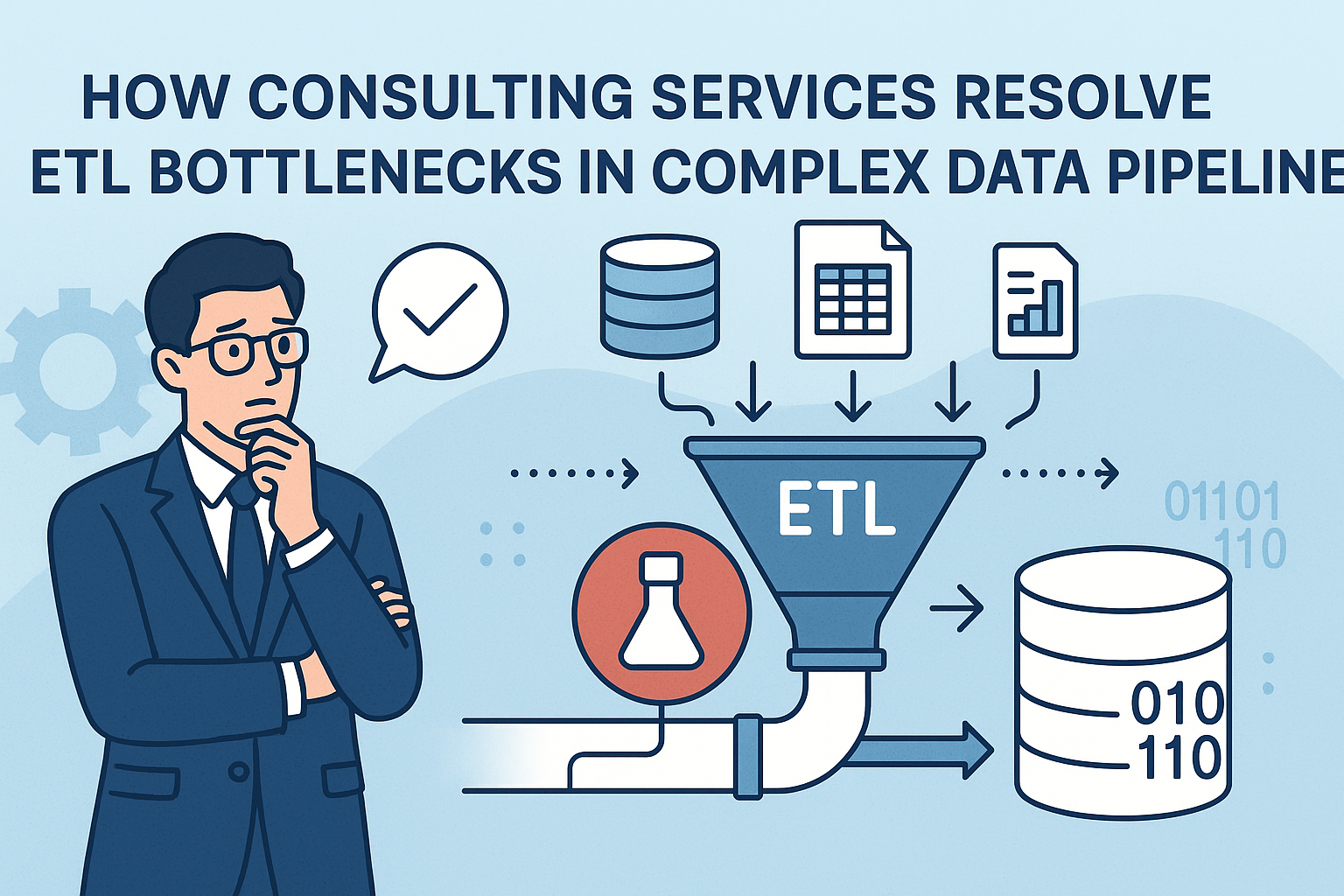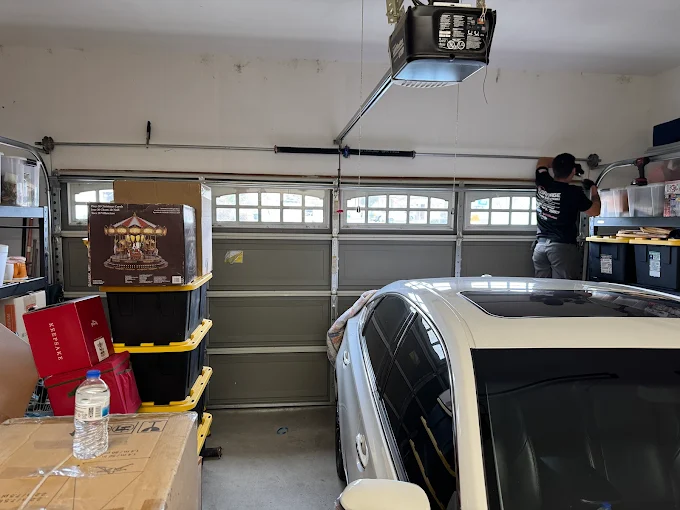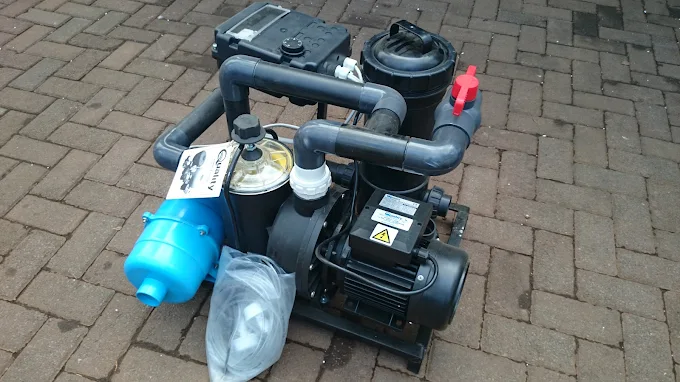
As organizations increasingly rely on data-driven decisions, complex data pipelines have become critical infrastructure to collect, process, and analyze vast amounts of data. Extract, Transform, Load (ETL) processes serve as the backbone of these pipelines, enabling seamless data integration from multiple sources. However, ETL pipelines can face bottlenecks that hamper performance, delay insights, and increase operational costs. This blog explores how Data Analytics Consulting Services effectively diagnose and resolve ETL bottlenecks, ensuring smooth and efficient data workflows.
Understanding ETL and Its Role in Data Pipelines
ETL is a data integration process that involves:
- Extracting data from multiple heterogeneous sources (databases, files, APIs, etc.)
- Transforming the data by cleansing, aggregating, or enriching it according to business rules
- Loading the transformed data into a target data warehouse, data lake, or analytical system
In complex data pipelines, ETL processes can involve multiple stages, parallel workflows, and huge data volumes. Optimizing ETL is vital to ensuring timely availability of accurate data for business intelligence, analytics, and reporting.
Common ETL Bottlenecks in Complex Data Pipelines
ETL bottlenecks arise when any phase of the ETL workflow delays the entire pipeline. Common causes include:
- Data Source Limitations: Slow extraction due to API rate limits or poor database performance
- Inefficient Transformations: Complex joins, data cleansing, or transformations that consume excessive CPU or memory
- Scalability Constraints: ETL tools or infrastructure unable to handle increasing data volumes
- Poor Workflow Orchestration: Sequential dependencies causing wait times instead of parallel processing
- Network and Storage Latency: Slow data movement between systems or insufficient storage throughput
- Lack of Monitoring: Delayed detection of failures or slowdowns leading to prolonged bottlenecks
These bottlenecks increase processing time, delay analytics delivery, and degrade user trust in data quality.
How Consulting Services Identify ETL Bottlenecks
Engaging Data Analytics Consulting Services brings specialized expertise to identify bottlenecks using a structured approach:
- Comprehensive Assessment: Consultants review the entire data pipeline architecture, ETL workflows, and infrastructure setup.
- Performance Profiling: Detailed profiling of each ETL stage to identify slow queries, memory leaks, or CPU spikes.
- Dependency Analysis: Mapping out data dependencies and job scheduling to uncover workflow inefficiencies.
- Data Volume and Velocity Analysis: Understanding data growth trends and their impact on pipeline performance.
- Monitoring and Logging Review: Evaluating existing monitoring tools and log data to spot recurring issues and failure points.
This detailed diagnosis sets the foundation for targeted ETL optimization strategies.
Strategies Consulting Services Use to Resolve ETL Bottlenecks
After identifying bottlenecks, Data Analytics Consulting Services deploy multiple optimization tactics:
a) Optimizing Data Extraction
- Using incremental data extraction to avoid full loads
- Implementing change data capture (CDC) to capture only changed records
- Enhancing source database indexing and query tuning
b) Improving Transformations
- Refactoring complex transformations into simpler, incremental steps
- Leveraging in-database or pushdown processing to minimize data movement
- Utilizing parallel processing and distributed computing frameworks (e.g., Apache Spark)
c) Enhancing Scalability
- Migrating to scalable cloud-based ETL platforms with elastic compute
- Adopting containerized ETL jobs for easier scaling and deployment
- Automating resource provisioning based on workload demand
d) Streamlining Workflow Orchestration
- Introducing workflow management tools (Apache Airflow, Prefect) for better job scheduling
- Implementing parallelism and task dependencies to reduce idle time
- Automating error handling and retry mechanisms
e) Reducing Network and Storage Latency
- Co-locating storage and compute resources in the same cloud region
- Using faster data transfer protocols and compression
- Implementing tiered storage solutions to optimize cost and performance
Benefits of Engaging Data Analytics Consulting Services
Partnering with professional consulting services brings multiple advantages:
- Expertise and Best Practices: Consultants bring years of experience and knowledge of cutting-edge ETL technologies.
- Faster Bottleneck Resolution: Targeted diagnosis and remedies accelerate pipeline performance improvements.
- Cost Efficiency: Optimized ETL reduces infrastructure costs and avoids costly downtime.
- Improved Data Quality and Timeliness: Reliable and faster ETL pipelines enhance trust in analytics outputs.
- Scalable Solutions: Future-proof your data pipelines to handle growing data volumes without degradation.
Real-World Examples of ETL Bottleneck Resolution
1: Retail Analytics Pipeline
A leading retail company experienced delays in daily sales reporting due to slow data extraction from legacy databases. Consulting services implemented CDC and optimized database queries, reducing extraction time by 60%, enabling near-real-time analytics.
2: Financial Services Data Warehouse
A financial firm faced transformation bottlenecks with complex joins on massive datasets. Consultants introduced distributed Spark processing and workflow parallelism, cutting ETL runtime from 8 hours to under 2 hours.
Conclusion
ETL bottlenecks in complex data pipelines can seriously impede the timely delivery of actionable insights. By leveraging specialized Data Analytics Consulting Services, organizations can identify root causes, apply industry-proven optimization strategies, and transform their data pipelines into efficient, scalable systems. This leads to better decision-making, cost savings, and a competitive edge in the data-driven marketplace.
FAQs
Q1: What are the signs of ETL bottlenecks?
Common signs include prolonged job runtimes, frequent failures, delayed data availability, and excessive resource consumption.
Q2: Can consulting services help with cloud-based ETL pipelines?
Yes, consultants specialize in both on-premise and cloud ETL architectures and can optimize pipelines on platforms like AWS Glue, Azure Data Factory, and Google Cloud Dataflow.
Q3: How long does it take to resolve ETL bottlenecks?
Resolution time varies by complexity but engaging consulting services typically accelerates the process significantly compared to internal troubleshooting.
Q4: Are there tools recommended by consulting services for ETL monitoring?
Yes, tools like Apache Airflow, Talend, Informatica, and custom monitoring dashboards are often recommended.






